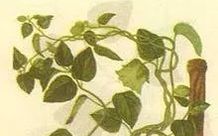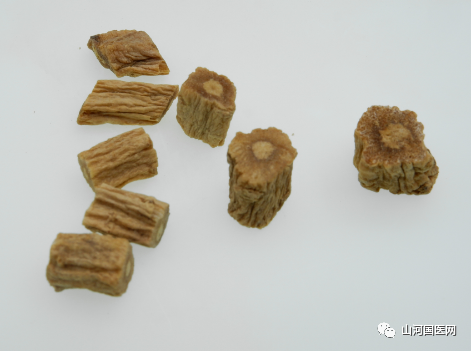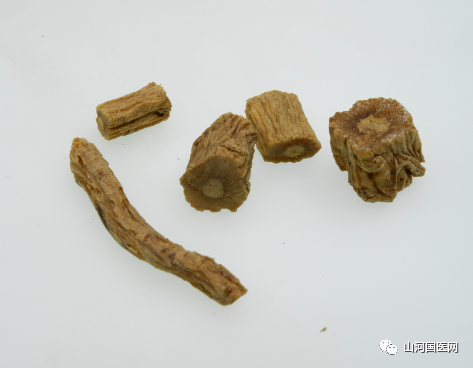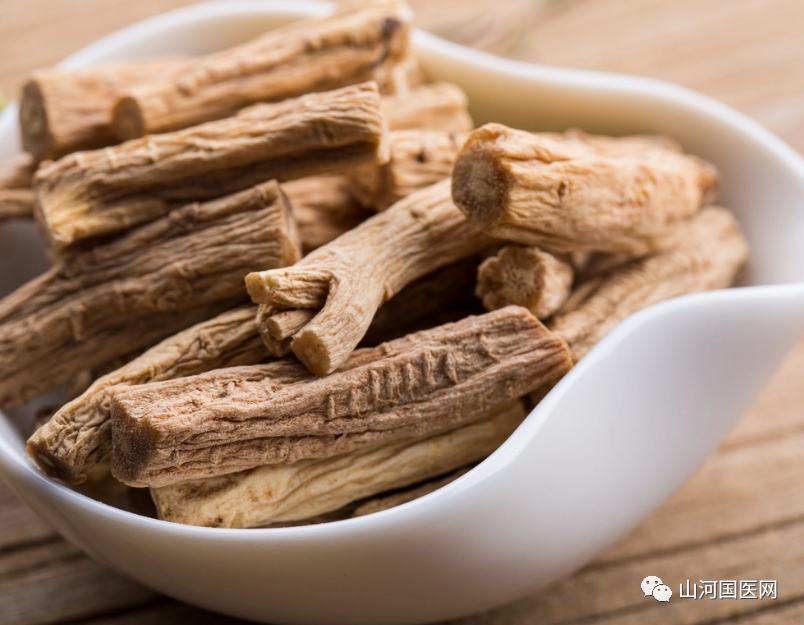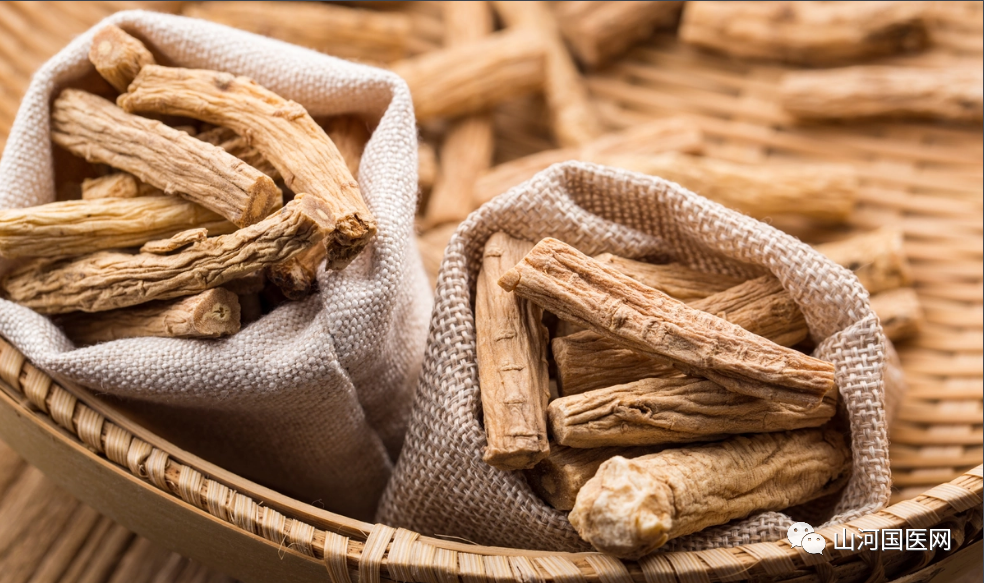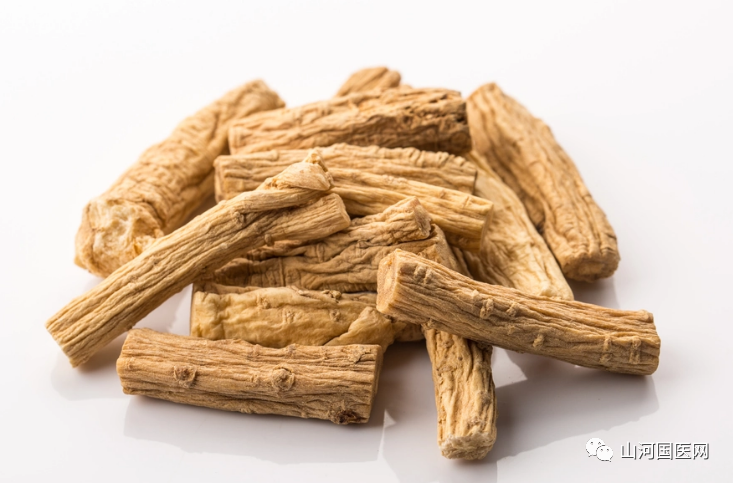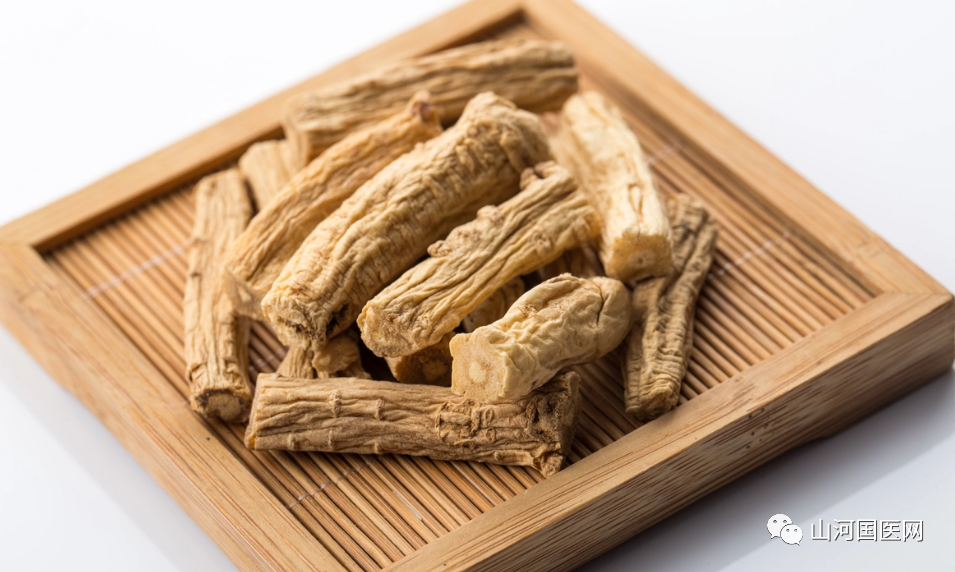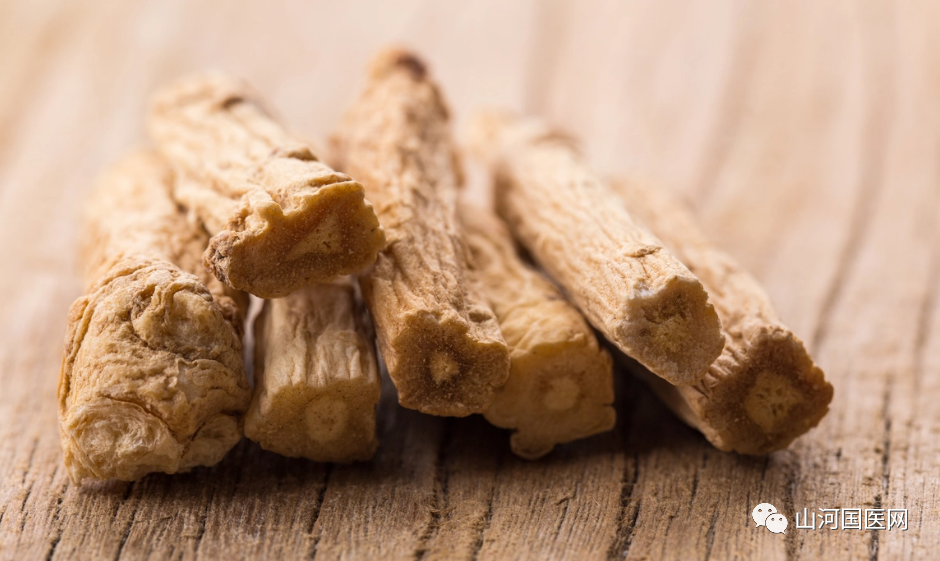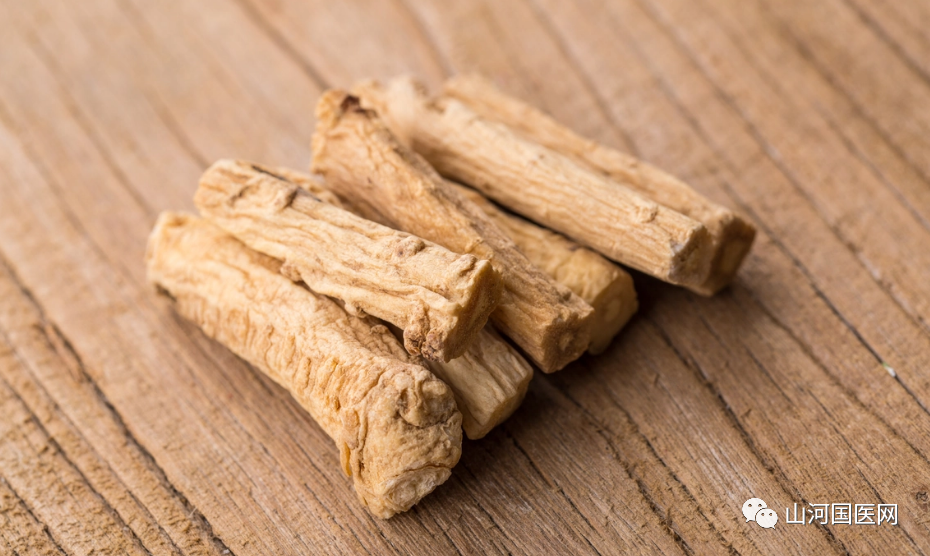| CodonopsisDǎnɡ Shēn | |
|---|---|

|
|
| Alias | Dong Dang, Tai Dang, Lu Dang, Kou Dang, Shang Dang Ren Shen, Huang Shen, Shi Tou Shen, Zhong Ling Cao, Fang Feng Dang Shen, Fang Dang Shen, Shang Dang Shen |
| Effects | Tonifies the Middle and Benefits Qi, strengthens the Spleen and benefits the Lungs. Used for Spleen and Lung deficiency, shortness of breath, palpitations, poor appetite, loose stools, and cough with wheezing due to deficiency heat. |
| English Name | Root of Pilose Asiabell, Pilose Asiabell Root, Moderate Asiabell Root, Szechwan Tangshen Root |
| First Recorded In | Ben Cao Cong Xin |
| Toxicity | Non-toxic |
| Meridians | Lung Meridian, Spleen Meridian |
| Nature | Neutral |
| Taste | Sweet |
Codonopsis refers to the plant Codonopsis and its medicinal materials. There are about 40 species of Codonopsis worldwide, with approximately 39 species in China, of which 21 are medicinal and 4 are varieties. The medicinal Codonopsis is derived from the roots of the perennial herbaceous plants of the Campanulaceae family, including Codonopsis pilosula, Codonopsis modesta, and Codonopsis tangshen. Codonopsis is a commonly used traditional tonic in China, with the highest quality sourced from the Shang Dang region of Shanxi, known for its ability to tonify the Middle and benefit Qi, strengthen the Spleen, and benefit the Lungs. Modern research shows that Codonopsis contains various carbohydrates, phenolic compounds, sterols, volatile oils, glycosides, saponins, and trace alkaloids, which enhance immunity, dilate blood vessels, lower blood pressure, improve microcirculation, and enhance hematopoietic function. It also has a role in increasing white blood cell counts during chemotherapy and radiotherapy. However, it is contraindicated for those with Qi stagnation or excessive Liver fire; it is not suitable for those with excess pathogens and no deficiency.
Basic Information
Plant
Kingdom:PlantaePhylum: AngiospermsClass: EudicotsOrder: AsteralesFamily: CampanulaceaeGenus: Codonopsis
Traditional Chinese Medicine
Medicine Name: CodonopsisAlias: Shang Dang Ren Shen, Fang Feng Dang Shen, Huang Shen, Fang Dang Shen, Shang Dang Shen, Shi Tou Shen, Zhong Ling Cao
Plant Morphology
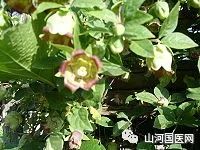
 Codonopsis (Image 2)1. Codonopsis is a perennial herb. The root is long and cylindrical, with a diameter of 1-1.7 cm, and the top has a swollen root head with multiple tuberous stem scars. The outer skin is milky yellow to light gray-brown, with longitudinal and transverse wrinkles. The stem is twining, long, and branched, with the lower part sparsely covered with coarse hairs; the upper part is smooth or nearly smooth. The leaves are opposite, alternate, or whorled; petioles are 0.5-2.5 cm long; leaf blades are ovate to broadly ovate, 1-7 cm long, 0.8-5.5 cm wide, with a blunt or pointed apex, and a truncate or shallowly heart-shaped base, entire or slightly wavy, green above with coarse hairs, and pale green below with sparse soft hairs. Flowers are solitary, with slender pedicels; the calyx is green, with 5 lobes, lanceolate, 1-2 cm long, blunt at the tip, smooth or slightly hairy; the corolla is broadly bell-shaped, 2-2.5 cm in diameter, pale yellow-green with light purple spots, with 5 lobes at the tip, triangular to broadly triangular, erect; there are 5 stamens, with filaments expanded below the middle; the ovary is inferior, with 3 chambers, and the style is short with 3 broad stigmas, funnel-shaped. The capsule is conical, with persistent calyx. Seeds are small, oval, brown, and shiny. Flowering period is from August to September, and fruiting period is from September to October.2. Codonopsis modesta differs from Codonopsis in that it is nearly smooth and hairless; the calyx lobes are smaller, about 10 mm long.3. Codonopsis tangshen differs from the previous two in that the lower leaves are wedge-shaped or rounded, occasionally heart-shaped; the calyx is only closely attached to the lower part of the ovary, and the ovary is almost entirely superior to the calyx. Flowering and fruiting period is from July to October.4. Codonopsis pilosula differs from the previous three in that the stem is not twining, more climbing or creeping. The petioles are shorter, less than 5 mm long. The calyx is attached to the middle of the ovary, with lobes that are broadly ovate, 1.2 mm long, about 8 mm wide, less than half the length of the corolla; the corolla is tubular; the filaments are hairy, and the anthers are dragon-bone shaped. Flowering and fruiting period is from July to October.5. Codonopsis ballota differs from the previous four in that the leaves are smaller, both length and width are below 3 cm. The calyx is attached to the tip of the ovary, with prickly hairs, and the lobes are ovate or rhombic-ovate, with wide blunt notches and serrated edges; the corolla is globular bell-shaped, yellow, with deep red-purple tips. Flowering and fruiting period is from July to October.6. Codonopsis grayhair differs from the previous five in that the stem is 25-85 cm long, with many branches, nearly woody. The plant is densely covered with white hairs, giving the stem a gray appearance. The leaves are alternate on the main stem and nearly opposite on the side branches, with smaller leaf blades, up to 1.5 cm x 1 cm. The calyx is densely covered with long white hairs; the corolla is generally no more than 2 cm long. Flowering and fruiting period is from July to October.
Codonopsis (Image 2)1. Codonopsis is a perennial herb. The root is long and cylindrical, with a diameter of 1-1.7 cm, and the top has a swollen root head with multiple tuberous stem scars. The outer skin is milky yellow to light gray-brown, with longitudinal and transverse wrinkles. The stem is twining, long, and branched, with the lower part sparsely covered with coarse hairs; the upper part is smooth or nearly smooth. The leaves are opposite, alternate, or whorled; petioles are 0.5-2.5 cm long; leaf blades are ovate to broadly ovate, 1-7 cm long, 0.8-5.5 cm wide, with a blunt or pointed apex, and a truncate or shallowly heart-shaped base, entire or slightly wavy, green above with coarse hairs, and pale green below with sparse soft hairs. Flowers are solitary, with slender pedicels; the calyx is green, with 5 lobes, lanceolate, 1-2 cm long, blunt at the tip, smooth or slightly hairy; the corolla is broadly bell-shaped, 2-2.5 cm in diameter, pale yellow-green with light purple spots, with 5 lobes at the tip, triangular to broadly triangular, erect; there are 5 stamens, with filaments expanded below the middle; the ovary is inferior, with 3 chambers, and the style is short with 3 broad stigmas, funnel-shaped. The capsule is conical, with persistent calyx. Seeds are small, oval, brown, and shiny. Flowering period is from August to September, and fruiting period is from September to October.2. Codonopsis modesta differs from Codonopsis in that it is nearly smooth and hairless; the calyx lobes are smaller, about 10 mm long.3. Codonopsis tangshen differs from the previous two in that the lower leaves are wedge-shaped or rounded, occasionally heart-shaped; the calyx is only closely attached to the lower part of the ovary, and the ovary is almost entirely superior to the calyx. Flowering and fruiting period is from July to October.4. Codonopsis pilosula differs from the previous three in that the stem is not twining, more climbing or creeping. The petioles are shorter, less than 5 mm long. The calyx is attached to the middle of the ovary, with lobes that are broadly ovate, 1.2 mm long, about 8 mm wide, less than half the length of the corolla; the corolla is tubular; the filaments are hairy, and the anthers are dragon-bone shaped. Flowering and fruiting period is from July to October.5. Codonopsis ballota differs from the previous four in that the leaves are smaller, both length and width are below 3 cm. The calyx is attached to the tip of the ovary, with prickly hairs, and the lobes are ovate or rhombic-ovate, with wide blunt notches and serrated edges; the corolla is globular bell-shaped, yellow, with deep red-purple tips. Flowering and fruiting period is from July to October.6. Codonopsis grayhair differs from the previous five in that the stem is 25-85 cm long, with many branches, nearly woody. The plant is densely covered with white hairs, giving the stem a gray appearance. The leaves are alternate on the main stem and nearly opposite on the side branches, with smaller leaf blades, up to 1.5 cm x 1 cm. The calyx is densely covered with long white hairs; the corolla is generally no more than 2 cm long. Flowering and fruiting period is from July to October.
Characteristics
Similar to ginseng, but with fewer branches, only the upper 1-3 cm of the root has ring patterns, slightly soft texture, and fewer fissures. The taste is slightly sour. The root is long cylindrical, slightly curved, 10-35 cm long, and 0.4-2 cm in diameter. The root head has numerous warty protrusions, and the top is a depressed round dot; below the root head, there are dense ring-like transverse wrinkles, which gradually become sparse downwards, some reaching half the total length. Cultivated varieties have fewer or no ring patterns; the entire root has longitudinal wrinkles and scattered horizontal lenticels, and the broken root often has black-brown gelatinous substances. The texture is slightly hard or slightly flexible, with a slightly flat cross-section, fissures or radial patterns, the bark is pale yellow-white to light brown, and the wood is light yellow. It has a special aroma and a slightly sweet taste.
Habitat Distribution
Ecological Environment
1. Grows in mountain shrublands and forest edges.2. Found in mountain forests, under trees, and in shrubs at altitudes of 1500-3200 m.3. Grows in mountain forest edges and shrubs at altitudes of 900-2300 m, now widely cultivated.5. Found in mountain grass slopes with many stones or in shrublands at altitudes of 2500-3500 m.6. Grows in mountain grass slopes, riverbanks, or sunny dry areas at altitudes of 3000-3400 m.
Resource Distribution
1. Distributed in Northeast, North China, Shaanxi, Ningxia, Gansu, Qinghai, Henan, Sichuan, Yunnan, and Tibet.2. Found in central Shanxi, southern Shaanxi, Gansu, Qinghai, and northwestern Sichuan.3. Distributed in Shaanxi, Hubei, Hunan, Sichuan, and Guizhou.4. Found in Sichuan, Guizhou, and Yunnan.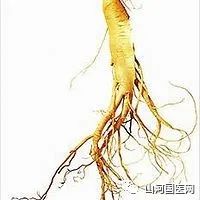
 Codonopsis5. Distributed in western Sichuan and northwestern Yunnan.6. Found in Qinghai, Sichuan, and Tibet.
Codonopsis5. Distributed in western Sichuan and northwestern Yunnan.6. Found in Qinghai, Sichuan, and Tibet.
Harvesting and Processing
Codonopsis can be transplanted and harvested in the autumn of the same year. After flowering and fruiting, seeds are harvested when the fruit turns brown, with successive harvests yielding higher yields than single harvests. Seeds are dried and stored in a ventilated area. Each hectare yields 150-225 kg of seeds.
Medicinal Material Source
Medicinal Material Basis
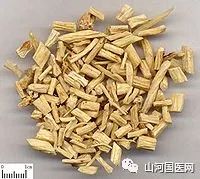
 Codonopsis (Image 3)① Pharmacopoeia of the People’s Republic of China (2005 edition): This product is the dried root of the Campanulaceae plant Codonopsis pilosula (Franch.) Nannf., Codonopsis modesta Nannf. var. modesta (Nannf.) L. T. Shen, or Codonopsis tangshen Oliv.② Chinese Materia Medica: The roots of Codonopsis pilosula, Codonopsis modesta, Codonopsis tangshen, Codonopsis pilosula, Codonopsis ballota, and Codonopsis grayhair.
Codonopsis (Image 3)① Pharmacopoeia of the People’s Republic of China (2005 edition): This product is the dried root of the Campanulaceae plant Codonopsis pilosula (Franch.) Nannf., Codonopsis modesta Nannf. var. modesta (Nannf.) L. T. Shen, or Codonopsis tangshen Oliv.② Chinese Materia Medica: The roots of Codonopsis pilosula, Codonopsis modesta, Codonopsis tangshen, Codonopsis pilosula, Codonopsis ballota, and Codonopsis grayhair.
Variety Verification
The name Codonopsis first appeared in the Qing Dynasty in Ben Cao Cong Xin, stating: “According to ancient materia medica, the best ginseng comes from Shang Dang. Genuine Codonopsis is now hard to find, and the varieties sold in the market are numerous and not suitable for use. Only Fang Feng Codonopsis, with its mild and valuable properties, is genuine if the root has a lion’s head, while the hard-textured ones are false.” The “genuine Codonopsis” refers to the ginseng of the Araliaceae family produced in the Shang Dang region of Shanxi. As the Araliaceae ginseng in this area gradually decreased and even became extinct, later generations used other medicinal materials that resembled ginseng to replace it, continuing to use the name “Shang Dang Ren Shen.” By the Qing Dynasty, physicians had clearly recognized that the substitutes did not have the same effects as ginseng and gradually classified the similar-looking Fang Feng Codonopsis as a new medicinal variety, naming it “Codonopsis.” Detailed records of this Codonopsis morphology can be found in Plant Names and Realities: “Codonopsis is abundant in Shanxi. The long roots can reach two to three feet, twining, with leaves not opposite, and nodes as large as fingers. Wild ones have white sap, and flowers bloom in autumn like sand ginseng, with blue-white flowers. Locals cultivate it for profit.” Combined with its illustrations, the original plant is consistent with the Codonopsis used today.
Processing Methods
1. Codonopsis: Wash off the mud and sand, soak to soften, remove the fibrous parts, slice or cut into sections, and dry in the sun.2. Fried Codonopsis: Place bran in a heated pot until smoke rises, add Codonopsis slices, and stir-fry until deep yellow, then remove and sift out the bran, and cool down. (For every 100 kg of Codonopsis, use 20 kg of bran.)
Medicinal Slices
1. Honey-fried Codonopsis segmentsSlice characteristics: Surface is yellow-brown, shiny, slightly sticky. Has a honey aroma and sweet taste.Processing method: Take an appropriate amount of honey, dilute with boiling water, mix with Codonopsis segments, steam thoroughly, place in a pot, and heat gently until yellow-brown and not sticky, then remove and cool. (For every 100 kg of Codonopsis segments, use 10 kg of honey.)Processing effect: After honey-frying, its sweetness is mild, enhancing the effects of tonifying the Middle and benefiting Qi.2. Codonopsis slicesSlice characteristics: Round thick slices or short cylindrical segments. The outer skin is yellow-white, gray-yellow, or yellow-brown. The cut surface is pale yellow-white or pale brown, with the wood part being light yellow, having fissures or radial patterns. The texture is slightly hard or slightly flexible. Has a special aroma and a slightly sweet taste.Processing method: Remove impurities, wash, soak, cut into thick slices, and dry.Processing effect: Used raw to enhance Qi and generate fluids.
Identification of Medicinal Materials
Physical Identification (1) Codonopsis: The root is slightly cylindrical, spindle-shaped, or long-conical, with few branches or branching below the middle, 15-45 cm long, and 0.45-2.5 cm in diameter. The surface is gray-yellow, gray-brown, or reddish-brown, with irregular longitudinal grooves and wrinkles, sparsely covered with horizontal lenticels, with more ring-like wrinkles at the upper part, especially dense near the root head; the root head has numerous protruding stem scars and bud scars, forming a ball shape, commonly referred to as “lion’s head”; sometimes, black-brown gelatinous substances can be seen at the broken root, which is the result of milk juice oozing out and solidifying (commonly known as oil spots). The texture is soft or hard, with a relatively flat cross-section, some appearing horn-like, with a thick bark that is yellow-white, pale brown, or brown, often with fissures, and a deep brown ring at the junction with the wood part, which occupies about 1/3-1/2 of the root diameter, light yellow. It has a faint aroma, sweet taste, and is chewable without residue.(2) Codonopsis modesta: The root is slightly shorter, not exceeding 30 cm, with few branches. The surface is gray-brown, with rough cork, often twisted or contorted, with dense ring patterns at the upper part; oil spots. The texture is tough, and the cross-section is not very flat. Chewing leaves residue.(3) Codonopsis tangshen: The lower part of the root has very few branches. The surface is gray-brown, with cork often partially falling off, and the upper part has sparse ring patterns. The cross-section has a thick bark, with fewer fissures. The taste is slightly sweet and sour.(4) Codonopsis pilosula: The root has one branch or slightly branched at the lower part. The surface is wrinkled with longitudinal grooves, sparsely covered with horizontal lenticels, and the upper part has sparse ring patterns; the root head has a ball-shaped lion’s head, and there are brown-black gelatinous substances at the broken part. The cross-section is powdery or sugary horn-like. It has a faint aroma and a slightly sweet taste.(5) Codonopsis ballota: The root is large, 20-43 cm long, and 1-3 cm in diameter. The surface has wrinkled longitudinal grooves, often twisted, with dense ring patterns at the upper part, gradually narrowing from the middle to the root head, commonly referred to as “snake head”; the root stem has numerous small stem scars or bud scars. The cross-section has a radial arrangement of small fissures. It has a specific odor.(6) Codonopsis grayhair: The lower part of the root has some branches. The cross-section is slightly powdery, with needle-like bright spots. It has a specific odor.Roots that are large, thick, fleshy, aromatic, sweet, and chewable without residue are considered the best.Microscopic Identification The transverse section of the root: (1) Codonopsis: Cork cells are 5-8 rows, with radial walls having longitudinal stripes; cork stone cells are scattered singly or in groups, located outside the cork layer or embedded between cork cells. The cortex is narrow, with many irregular or broken cells, pressed into a collapsed tissue; there are groups of milk ducts distributed. The phloem is broad, with groups of milk ducts accompanying sieve tubes arranged radially, with the cut surface slightly showing multiple discontinuous concentric rings, and the milk ducts contain pale yellow granular secretions; the phloem rays consist of 5-9 rows of cells, often showing fissures, forming a ring. The xylem occupies about 1/2-4/7 of the root radius; vessels are single or clustered in groups of 5-10, arranged radially in 1(-2) rows; the wood rays are broad, often broken, forming larger fissures; the wood fibers are tightly arranged; the primary xylem is tripartite. This product’s parenchyma cells are filled with inulin and a few starch granules.(2) Codonopsis modesta: The outer cork layer has a thicker ring of cork stone cells, some of which are partially shed; the phloem occupies about 2/3 of the root radius; the xylem is small, with vessels of varying sizes, often arranged in a ring-like pattern resembling annual rings. This product’s parenchyma cells contain starch granules and a small amount of inulin.(3) Codonopsis tangshen: The cork cells are slightly thickened, with pore patterns; the cork stone cells are arranged in discontinuous rings, some embedded between cork cells; the phloem occupies about 2/3 of the root radius; the xylem is relatively small, with some thickened wood fibers. This product’s parenchyma cells contain starch granules, mostly compound granules; inulin is present in fissures and vessels.(4) Codonopsis pilosula: The cork cells are 3-7 rows; the phloem has obvious cell gaps between parenchyma cells; the xylem occupies 1/3-1/4 of the root radius, with vessels mostly scattered singly; this product’s parenchyma cells are filled with starch granules. The starch granules in the phloem are 13-16 μm in diameter, mostly compound granules, while those in the xylem are 4-7 μm in diameter, mostly single granules; inulin is mainly distributed in the xylem, with inulin cells often associated with vessels.(5) Codonopsis ballota: The cork cells are 5-10 rows; the phloem occupies 5/8 of the root radius; the rays are 5-7 rows of cells; the xylem occupies about 3-8 of the root radius, with slightly thickened wood fibers; this product’s parenchyma cells contain a large amount of inulin, found in the thin-walled cells surrounding the vessels.(6) Codonopsis grayhair: The cork cells are tangentially elongated, reaching 164 μm; the phloem and xylem are nearly equal in diameter; the wood rays are broad, and the phloem rays are narrow, with only 2-4 rows of cells.Powder Characteristics: (1) Codonopsis: Yellow-white. (i) Contains a lot of inulin; using cold water and chloral hydrate solution, the inulin clumps are slightly fan-shaped. They are round or semi-circular, with radial line patterns on the surface. (ii) Contains many stone cells, scattered singly or in groups, some embedded with cork cells; stone cells are polygonal, square, rectangular, or irregular, with a diameter of 24-51 μm, with sparse pore patterns. (iii) Contains edge pore patterns, net patterns, and ladder-like edge patterns in vessels and ladder-like vessels, with a diameter of 21-80 μm and a length of 80-88 μm. (iv) Milk ducts are connected by nodes, with a diameter of 12-15 μm, filled with oil droplets and fine particles in the surrounding cells. (v) Cork cells are brown-yellow, appearing rectangular, rhomboidal, or polygonal, with slightly wavy vertical walls, lignified, and with longitudinal stripes. In addition, a few starch granules can be seen.(2) Codonopsis modesta: Light yellow. (i) Contains many stone cells, with a diameter of 19-60 μm, length 35-107 (-256) μm, with varying wall thickness, with obvious pore patterns, some dense and interlaced in a net-like or honeycomb pattern. (ii) The thin-walled cells are spindle-shaped, with secondary walls thickened in a net-like or ladder-like pattern. (iii) Pigment blocks are yellow or brown-red, some filling the vessels. (iv) Starch granules are single, round or oval.(3) Codonopsis tangshen: White-like. (i) Contains fewer stone cells, with a diameter of 25-36 μm, length 60-76 μm, wall thickness 3-5 (-8) μm, some with thicker middle walls, making the cell cavity appear dumbbell-shaped, with obvious pore patterns, trumpet-shaped or funnel-shaped. (ii) The thin-walled cells are spindle-shaped, some with net-like patterns on the vertical walls, and some with obvious pore patterns. (iii) Contains more starch granules, single round or oval granules, with a diameter of 6-20 μm, with hilum points that are either obvious or unclear; compound granules consist of 2-7 sub-granules.(4) Codonopsis pilosula: White. (i) Contains many starch granules, single round or oval granules, with a diameter of 6-30 μm, with hilum points that are fissured, dotted, or star-shaped, with large granules having obvious layer patterns; semi-compound granules have 2-3 hilum points; compound granules consist of 2 sub-granules, with varying sizes. (ii) Cork cells are square or rectangular, with lengths and widths reaching 80-100 μm, with lignified walls. (iii) Thin-walled cells are rectangular, with secondary walls thickened in a ladder-like, net-like, or spiral pattern.(5) Codonopsis ballota: Light yellow-white. (i) Cork cells appear rectangular or rhomboidal, with some vertical walls thickened in a bead-like pattern, with obvious pore patterns. (ii) Thin-walled cells are long or short spindle-shaped, with secondary walls thickened in a ladder-like or net-like pattern, with lateral walls appearing bead-like. (iii) Ray cells are arranged regularly, with rectangular cells in the radial view, with some radial walls separating or thickening in a bead-like pattern. (iv) Thick-walled cells are stone-cell-like, with obvious pore patterns, and the walls are not lignified. (v) Pigment blocks are easily winded, brown or bright yellow.(6) Codonopsis grayhair: Light yellow. (i) Cork cells appear long, narrow, or polygonal, with visible stripes on the vertical walls. (ii) Thin-walled cells are fine spindle-shaped, with secondary walls thickened in a ladder-like or net-like pattern, with lateral walls appearing bead-like. (iii) No pigment blocks. (iv) The rest is similar to Codonopsis ballota.
Product Specifications
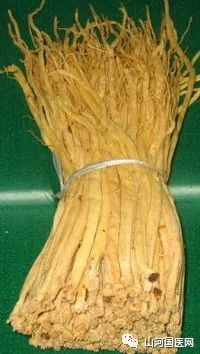
 Codonopsis (Image 4)1. Dong Dang First Class: Length over 20 cm, diameter at the base over 1 cm, no hair roots. Second Class: Length under 20 cm, diameter at the base over 0.5 cm.2. Lu Dang First Class: Diameter at the base over 1 cm, no oil strips. Second Class: Diameter at the base over 0.8 cm, no oil strips. Third Class: Diameter at the base over 0.4 cm, oil strips not exceeding 10%.3. Xi Dang First Class: Diameter at the base over 1.5 cm, no oil strips. Second Class: Diameter at the base over 1 cm, no oil strips. Third Class: Diameter at the base over 0.6 cm, oil strips not exceeding 15%.4. Tiao Dang First Class: Diameter at the base over 1.2 cm, no oil strips. Second Class: Diameter at the base over 0.8 cm, no oil strips. Third Class: Diameter at the base over 0.5 cm, oil strips not exceeding 10%, no ginseng seedlings.
Codonopsis (Image 4)1. Dong Dang First Class: Length over 20 cm, diameter at the base over 1 cm, no hair roots. Second Class: Length under 20 cm, diameter at the base over 0.5 cm.2. Lu Dang First Class: Diameter at the base over 1 cm, no oil strips. Second Class: Diameter at the base over 0.8 cm, no oil strips. Third Class: Diameter at the base over 0.4 cm, oil strips not exceeding 10%.3. Xi Dang First Class: Diameter at the base over 1.5 cm, no oil strips. Second Class: Diameter at the base over 1 cm, no oil strips. Third Class: Diameter at the base over 0.6 cm, oil strips not exceeding 15%.4. Tiao Dang First Class: Diameter at the base over 1.2 cm, no oil strips. Second Class: Diameter at the base over 0.8 cm, no oil strips. Third Class: Diameter at the base over 0.5 cm, oil strips not exceeding 10%, no ginseng seedlings.
Codonopsis Aliases
Aliases Xi Dang Shen, Dong Dang, Fang Dang, Fang Dang, Shang Dang, Shang Dang Ren Shen, Lu Dang, Lu Zhou Dang, Lu Zhou Dang Shen, Wild Dang Shen, Tai Dang, Tai Shen, Wild Tai Dang, Wild Tai Dang Shen, Huang Shen, Shi Tou Shen, Zhong Ling Cao Gen, Kou Dang, Nian Dang Shen, Liao Shen, San Ye Cai Gen, Ye Zi Cao Gen, Wu Tai Dang.Product NamesWild Codonopsis: A general term for wild varieties of Codonopsis.Tai Codonopsis: Grown in the Wutai Mountain area of Shanxi.Wild Tai Codonopsis: Also known as Wild Tai Codonopsis, grown in Wutai Mountain. The roots are thick and fleshy, with a sweet and fragrant taste, making it a precious variety of Codonopsis.Fang Codonopsis: Grown in the Wudu area of Gansu, after being steamed with wine, the inner color turns black, and the skin color is yellow, with transverse wrinkles resembling Fang Feng, hence the name Fang Codonopsis. It has excellent quality.Lu Codonopsis: Also known as Shang Dang, Shang Dang Codonopsis, Bai Pi Dang, Yi Tiao Dang, etc. It is produced in the Changzhi area of Shanxi (historically known as Shang Dang County in the Qin Dynasty and Lu Zhou in the Sui Dynasty, hence the names Shang Dang Codonopsis and Lu Codonopsis). It has the best quality and is a genuine medicinal material. Most are cultivated varieties. According to quality, they can be divided into Gong Lu, Kui Lu, and Tu Lu specifications. Gong Lu has the best quality, followed by Kui Lu, and Tu Lu is the lowest.Wen Yuan Codonopsis: Also known as Wen Yuan Dang, Bo Yuan Codonopsis, Wen Yuan Codonopsis. It is produced in the Bailong River basin of Gansu and has good quality. Most are cultivated varieties.Dong Codonopsis: Also known as Dong Dang, Jilin Dang, Jilin Codonopsis. It is mainly produced in Northeast China.Xi Codonopsis: Also known as Xi You Dang, You Dang, Min Dang, Wen Jue, Pin Dang, and Su Hua Codonopsis. Most are artificially cultivated and also of good quality.Tiao Codonopsis: Also known as Tiao Dang, Chuan Dang, Chuan Dang, Dan Zhi Dang, Dan Zhi Codonopsis, Ban Qiao Dang, Ba Xian Dang, Ba Xian Codonopsis. It is cultivated from seeds using planting methods. The roots are thick and fleshy, with a sweet taste and sufficient sugar content, making it of better quality.Bai Codonopsis: Also known as Bai Dang, Tian Dang, Xu Dang, Guan Hua Codonopsis, etc. It is mainly produced in Sichuan, Yunnan, and Guizhou. It has a harder texture, less sugar, and is white, making it of lower quality.Green Flower Codonopsis: Also known as High Mountain Codonopsis. It is mainly produced in Sichuan.Qinling Codonopsis: The root of the same genus plant Qinling Codonopsis. It is mainly produced in Shaanxi and Gansu.Xinjiang Codonopsis: Also known as Upright Codonopsis. It is the root of the same genus plant Xinjiang Codonopsis. It is mainly produced in Xinjiang.Chai Codonopsis: The root of the same genus plant Chai Codonopsis. It is mainly produced in Sichuan and Gansu.She Tou Codonopsis: Also known as She Tou Dang, Nan Lu She Tou Dang. It is the root of the same genus plant She Tou Codonopsis. It is mainly produced in Sichuan.Gray White Leaf Codonopsis: Also known as Bei Lu She Tou Dang. It is the root of the same genus plant Gray White Leaf Codonopsis.Small Flower Codonopsis: The root of the same genus plant Small Flower Codonopsis. It is mainly produced in Sichuan.Large Head Codonopsis: Also known as Large Head Dang, Xin Ye Dang. It is the root of the same genus plant Large Head Codonopsis. It is mainly produced in Sichuan.All are considered best when the roots are large, thick, loose-skinned, tight-fleshed, with transverse wrinkles and lion’s head roots, with oily texture, fragrant sweet taste, and chewable without residue.Prescription NamesCodonopsis, Shang Dang, Lu Dang, Lu Dang Codonopsis, Shang Dang Codonopsis, Fried Codonopsis, Roasted Codonopsis, Honey-fried Codonopsis, Wine Codonopsis.In prescriptions, Codonopsis, Shang Dang, Lu Dang, Lu Dang Codonopsis, etc., refer to raw Codonopsis. The original medicine is washed, dried, and then soaked and sliced for medicinal use.Fried Codonopsis refers to Codonopsis slices fried with bran (or rice, soil, red stone fat, etc.) until slightly yellow with a few scorched spots, then removed and cooled for medicinal use. It enhances the effects of strengthening the Spleen and harmonizing the stomach.Roasted Codonopsis, also known as Honey-fried Codonopsis, refers to Codonopsis slices mixed with honey, then gently fried until not sticky, removed, and cooled for medicinal use. It enhances the effects of moistening the lungs and benefiting Yin, tonifying the Middle and benefiting Qi.Wine Codonopsis refers to Codonopsis slices sprayed with yellow wine, steamed thoroughly, dried, and used for medicinal purposes.
Pharmacological Discussion
Nature and Taste
Neutral in nature, sweet and slightly sour in taste. It enters the Spleen and Lung meridians.
Functions and Indications
Tonifies the Middle and Benefits Qi, strengthens the Spleen and benefits the Lungs. Used for Spleen and Lung deficiency, shortness of breath, palpitations, poor appetite, loose stools, cough with wheezing, and internal heat thirst.This product is a commonly used Qi-tonifying medicine in clinical practice, with functions of tonifying the Spleen and benefiting the Lungs, similar to ginseng but weaker. It is suitable for various Qi deficiency conditions and is often combined with Huang Qi (Astragalus), Bai Zhu (Atractylodes), Shan Yao (Chinese Yam), etc. For symptoms of blood deficiency, pale complexion, and chronic bleeding diseases leading to both Qi and blood deficiency, it can be combined with blood-tonifying herbs such as Shu Di Huang (Rehmannia), Dang Gui (Angelica), etc.1. Spleen and Lung Qi Deficiency Syndrome. This product is sweet and neutral, primarily entering the Spleen and Lung meridians, with the main function of tonifying Spleen and Lung Qi. It is used for symptoms of Qi deficiency such as fatigue, poor appetite, and loose stools, often combined with Bai Zhu (Atractylodes) and Fu Ling (Poria) to tonify Qi and strengthen the Spleen. For cough and shortness of breath due to Lung Qi deficiency, it can be combined with Huang Qi (Astragalus) and Ge Jie (Gecko) to tonify Lung Qi and stop cough. Its tonifying effects on the Spleen and Lung are similar to ginseng but weaker, often used as a substitute for ginseng in ancient formulas to treat mild cases of Spleen and Lung Qi deficiency.2. Qi and Blood Deficiency Syndrome. This product can tonify both Qi and blood, often used for Qi deficiency that cannot generate blood, or blood deficiency that cannot transform Qi, leading to symptoms such as pale or sallow complexion, fatigue, and dizziness.3. Qi and Fluid Damage Syndrome. This product can also tonify Qi and generate fluids for symptoms of thirst and shortness of breath due to heat damaging Qi and fluids, suitable for mild cases of Qi and fluid damage, often combined with Mai Dong (Ophiopogon) and Wu Wei Zi (Schisandra) to nourish Yin and generate fluids.In addition, this product is often combined with exterior-releasing herbs and purgative herbs to expel pathogens in cases of Qi deficiency with exterior pathogens or internal heat accumulation with Qi and blood deficiency, to support the righteous Qi while expelling the evil.
Dosage and Administration
① Chinese Materia Medica: For internal use: decoction, 6-15 g; or extract, pills, or powder. For generating fluids and nourishing blood, it is best used raw; for tonifying the Spleen and benefiting the Lungs, it is best used fried.② Chinese Pharmacopoeia: Decoction, 9-30 g.
Various Discussions
1. Ben Jing Feng Yuan: Clears the lungs. Although Shang Dang Ren Shen does not have the strong warming and tonifying effects, it has the mild and neutral ability to clear the lungs, unlike Sha Shen, which is cold and specializes in draining Lung Qi.2. Ben Cao Cong Xin: Tonifies the Middle and benefits Qi, harmonizes the Spleen and stomach, and relieves thirst.3. Gang Mu Shi Yi: Treats Lung deficiency and benefits Lung Qi.4. Scientific Folk Herbs: Blood tonic. Suitable for chronic anemia, sallow disease, leukemia, glandular disease, and rickets.5. Handbook of Chinese Medicinal Materials: Treats deficiency labor, internal injury, cold in the intestines and stomach, chronic diarrhea, shortness of breath, thirst, fever, spontaneous sweating, and women’s blood collapse and childbirth-related diseases.6. De Pei Ben Cao: Shang Dang Ren Shen, when combined with Huang Qi, can stop diarrhea; when combined with Dang Gui, it can invigorate blood; when combined with Zao Ren, it can tonify the heart. For tonifying the lungs, it can be honey-steamed; for tonifying the Spleen, it can be combined with Sang Pi (Mulberry Bark) in small amounts, or with Guang Pi (Citrus Peel) as well.7. Ben Cao Zheng Yi: Codonopsis can tonify the Spleen and nourish the stomach, moisten the lungs and generate fluids, regulate the Middle Qi, and is not far from ginseng. Its most valuable aspect is that it tonifies the Spleen without causing dryness, nourishes the stomach Yin without causing dampness, moistens the lungs without being cold, nourishes blood without being overly rich, invigorates the clear Yang, and stimulates the Middle Qi without causing dryness. It is more substantial than Liao Shen and less inclined towards Yin, while Korean ginseng is robust but slightly harsh; it is particularly balanced and suitable for nourishing the five organs without any contraindications. However, its strength is relatively weak and cannot last long; for post-illness deficiency, taking 6-12 g can only stimulate the spirit for one day, indicating that it is not suitable for prolonged use. Nevertheless, it supports the Middle and moistens the four corners, so all ancient and modern formulas that use ginseng can be replaced with Lu Dang Codonopsis, and all conditions treated with ginseng can also be treated with Lu Dang Codonopsis.
Medicinal Compatibility
1. Used for Qi deficiency with fatigue, poor appetite, and loose stools. It can tonify the Middle and benefit Qi, often combined with Huang Qi (Astragalus) and Bai Zhu (Atractylodes).2. Used for cough and shortness of breath due to Lung Qi deficiency, with low voice and weakness. It can benefit Lung Qi, often combined with Huang Qi (Astragalus) and Wu Wei Zi (Schisandra).3. Used for symptoms of thirst and shortness of breath due to Qi and fluid damage, and for pale complexion and dizziness due to both Qi and blood deficiency. It has the effects of benefiting Qi and generating fluids, and can be combined with Mai Dong (Ophiopogon) and Wu Wei Zi (Schisandra) for generating fluids, or with Dang Gui (Angelica) and Shu Di Huang (Rehmannia) for blood tonification.In addition, for Qi deficiency with exterior pathogens and for conditions of righteous deficiency with evil excess, it can also be combined with exterior-releasing herbs or purgative herbs to support the righteous and expel the evil. For example, it can be combined with Zi Su (Perilla) and Sheng Jiang (Ginger) to benefit Qi and release the exterior, as in the Jufang formula Shen Su Yin. For treating Qi and blood deficiency with internal heat accumulation, it can be combined with Dang Gui, Da Huang (Rhubarb), and Mang Xiao (Glauber’s Salt) for a combined attack and tonification, as in the Shang Han Liu Shu formula Huang Long Tang.
Clinical Experience
Professor Jiao Shude believes that Codonopsis is sweet and neutral in nature. Its main function is to tonify Qi and strengthen the Spleen. It is often used as a substitute for ginseng to treat Qi deficiency syndromes. Clinically, it is commonly used in the following situations:1. Strengthening the Spleen and Stomach: Insufficient Spleen and Stomach Qi can lead to symptoms such as fatigue, shortness of breath, lack of appetite, and soft stools. This product can enhance Spleen and Stomach function and benefit Qi, often combined with Bai Zhu (Atractylodes), Fu Ling (Poria), Gan Cao (Licorice), and Chen Pi (Tangerine Peel) (as in Wu Wei Yi Gong San) or with Bai Zhu, Shan Yao (Chinese Yam), Bian Dou (Hyacinth Bean), Qian Shi (Euryale), Lian Rou (Lotus Seed), Yi Yi Ren (Job’s Tears), and Fu Ling (Poria) (as in Shen Ling Bai Zhu San).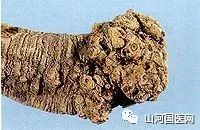
 Codonopsis – Lu Dang Codonopsis2. Benefiting Qi and Nourishing Blood: For symptoms of both Qi and blood deficiency (shortness of breath, fatigue, pale complexion, pale tongue, and even weakness or a weak pulse), this product can be combined with Bai Zhu (Atractylodes), Fu Ling (Poria), Gan Cao (Licorice), Dang Gui (Angelica), Shu Di Huang (Rehmannia), Bai Shao (White Peony), and Chuan Xiong (Ligusticum) (as in Ba Zhen Tang) to achieve the effect of tonifying both Qi and blood. Furthermore, previous experiences suggest that benefiting Qi can promote blood nourishment, and strengthening the Spleen can help generate blood. Therefore, when treating blood deficiency syndromes, Codonopsis is often used to benefit Qi and strengthen the Spleen to assist in blood nourishment. For example, it can be combined with Bai Zhu, Fu Ling, Gan Cao, Dang Gui, Shu Di Huang, Bai Shao, Yuan Zhi (Polygala), Wu Wei Zi (Schisandra), and Chen Pi (Tangerine Peel) for Ren Shen Yang Rong Tang (using Codonopsis instead of ginseng); or with Huang Qi, Bai Zhu, Dang Gui, Bai Shao, Chen Pi, Long Yan Rou (Longan), Mu Xiang (Saussurea), and Yuan Zhi for Gui Pi Tang, which are commonly used formulas for benefiting Qi and nourishing blood. Recent experiments have shown that this product can stimulate the spleen to increase hemoglobin and red blood cells. In recent years, it has often been combined with Dang Gui, Bai Shao, Sheng Di (Raw Rehmannia), and Shu Di Huang (Rehmannia) to treat various types of anemia.3. Treating Qi deficiency cough and wheezing: The lungs are the master of Qi; if the lungs are deficient, Qi cannot be governed, leading to symptoms such as shortness of breath, wheezing, weak voice, spontaneous sweating, susceptibility to colds, and phlegm without direction. For Qi deficiency cough and wheezing, this product is often combined with Mai Dong (Ophiopogon), Wu Wei Zi (Schisandra), Huang Qi (Astragalus), Gan Jiang (Dried Ginger), Bei Mu (Fritillaria), and Gan Cao (Licorice).4. Substitute for Du Shen Tang: In emergencies of collapse, ginseng (Du Shen Tang) is often used. If ginseng is temporarily unavailable, Codonopsis can be used at 30-90 g, combined with Fu Zi (Aconite) 6-9 g, and Bai Zhu (Atractylodes) 15-30 g, decocted urgently, which can replace Du Shen Tang.Huang Qi tonifies Qi, can both raise and tonify Spleen Qi, and can also benefit the lungs and stabilize the exterior. Codonopsis tonifies Qi, but can only strengthen the Spleen and Qi without stabilizing the exterior. However, Codonopsis can also benefit Qi and generate fluids, while Huang Qi does not have the effect of generating fluids. Huang Qi can also promote diuresis, while Codonopsis does not have diuretic effects. Bai Zhu tonifies Qi, mainly tonifying Spleen Qi, and can also strengthen the Spleen and dry dampness. Codonopsis tonifies Qi, benefiting both the Spleen and Lungs, but its drying power is not as strong as that of Bai Zhu. Huang Jing tonifies Qi and can also moisten the heart and lungs, fill the essence, and assist the muscles and bones, but its nature is mild, and its effects are slow, requiring prolonged use to see results. Codonopsis tonifies Qi, and its effects are rapid.Due to different origins, Codonopsis has two types: “Tai Codonopsis” (Tai Shen) and Lu Codonopsis, with similar medicinal effects. Currently, pharmacies no longer distinguish between them.The usual dosage is 6-12 g. In severe or acute cases, it can be used up to 30-60 g or more. Contraindications and precautions are the same as for ginseng. According to modern research, this product has a strengthening effect, can enhance the body’s resistance; it can increase red blood cells and decrease white blood cells; it can dilate peripheral blood vessels and lower blood pressure, and can inhibit the pressurizing effect of adrenaline. It can be used according to the principles of syndrome differentiation and treatment.
Codonopsis – Lu Dang Codonopsis2. Benefiting Qi and Nourishing Blood: For symptoms of both Qi and blood deficiency (shortness of breath, fatigue, pale complexion, pale tongue, and even weakness or a weak pulse), this product can be combined with Bai Zhu (Atractylodes), Fu Ling (Poria), Gan Cao (Licorice), Dang Gui (Angelica), Shu Di Huang (Rehmannia), Bai Shao (White Peony), and Chuan Xiong (Ligusticum) (as in Ba Zhen Tang) to achieve the effect of tonifying both Qi and blood. Furthermore, previous experiences suggest that benefiting Qi can promote blood nourishment, and strengthening the Spleen can help generate blood. Therefore, when treating blood deficiency syndromes, Codonopsis is often used to benefit Qi and strengthen the Spleen to assist in blood nourishment. For example, it can be combined with Bai Zhu, Fu Ling, Gan Cao, Dang Gui, Shu Di Huang, Bai Shao, Yuan Zhi (Polygala), Wu Wei Zi (Schisandra), and Chen Pi (Tangerine Peel) for Ren Shen Yang Rong Tang (using Codonopsis instead of ginseng); or with Huang Qi, Bai Zhu, Dang Gui, Bai Shao, Chen Pi, Long Yan Rou (Longan), Mu Xiang (Saussurea), and Yuan Zhi for Gui Pi Tang, which are commonly used formulas for benefiting Qi and nourishing blood. Recent experiments have shown that this product can stimulate the spleen to increase hemoglobin and red blood cells. In recent years, it has often been combined with Dang Gui, Bai Shao, Sheng Di (Raw Rehmannia), and Shu Di Huang (Rehmannia) to treat various types of anemia.3. Treating Qi deficiency cough and wheezing: The lungs are the master of Qi; if the lungs are deficient, Qi cannot be governed, leading to symptoms such as shortness of breath, wheezing, weak voice, spontaneous sweating, susceptibility to colds, and phlegm without direction. For Qi deficiency cough and wheezing, this product is often combined with Mai Dong (Ophiopogon), Wu Wei Zi (Schisandra), Huang Qi (Astragalus), Gan Jiang (Dried Ginger), Bei Mu (Fritillaria), and Gan Cao (Licorice).4. Substitute for Du Shen Tang: In emergencies of collapse, ginseng (Du Shen Tang) is often used. If ginseng is temporarily unavailable, Codonopsis can be used at 30-90 g, combined with Fu Zi (Aconite) 6-9 g, and Bai Zhu (Atractylodes) 15-30 g, decocted urgently, which can replace Du Shen Tang.Huang Qi tonifies Qi, can both raise and tonify Spleen Qi, and can also benefit the lungs and stabilize the exterior. Codonopsis tonifies Qi, but can only strengthen the Spleen and Qi without stabilizing the exterior. However, Codonopsis can also benefit Qi and generate fluids, while Huang Qi does not have the effect of generating fluids. Huang Qi can also promote diuresis, while Codonopsis does not have diuretic effects. Bai Zhu tonifies Qi, mainly tonifying Spleen Qi, and can also strengthen the Spleen and dry dampness. Codonopsis tonifies Qi, benefiting both the Spleen and Lungs, but its drying power is not as strong as that of Bai Zhu. Huang Jing tonifies Qi and can also moisten the heart and lungs, fill the essence, and assist the muscles and bones, but its nature is mild, and its effects are slow, requiring prolonged use to see results. Codonopsis tonifies Qi, and its effects are rapid.Due to different origins, Codonopsis has two types: “Tai Codonopsis” (Tai Shen) and Lu Codonopsis, with similar medicinal effects. Currently, pharmacies no longer distinguish between them.The usual dosage is 6-12 g. In severe or acute cases, it can be used up to 30-60 g or more. Contraindications and precautions are the same as for ginseng. According to modern research, this product has a strengthening effect, can enhance the body’s resistance; it can increase red blood cells and decrease white blood cells; it can dilate peripheral blood vessels and lower blood pressure, and can inhibit the pressurizing effect of adrenaline. It can be used according to the principles of syndrome differentiation and treatment.
Contraindications
1. De Pei Ben Cao: Contraindicated for Qi stagnation and excessive anger.2. Yao Long Xiao Pin: Avoid in cases of fullness with heat.3. Chinese Materia Medica: Contraindicated for excess conditions, heat conditions, and should not be used alone in cases of righteous deficiency with evil excess.
Selected Formulas
① For clearing the lungs, tonifying the original Qi, opening the voice, and assisting muscle strength: 1 kg of Codonopsis (soft and sweet, sliced), 0.5 kg of Sha Shen (sliced), and 200 g of longan flesh. Boil in water until concentrated, until the drops form beads, and store in a ceramic container. Each use is one wine cup, mixed with hot water, or can be added to the decoction. (From De Pei Ben Cao Codonopsis Paste)② For treating diarrhea and postpartum Qi deficiency with prolapse: 2 qian of Codonopsis (remove fibrous parts, fry with rice), 1.5 qian each of fried Huang Qi and Bai Zhu (clean and fry), 1.5 qian of nutmeg frost, and 2 qian of fried Shan Yao, 0.6 qian of Sheng Ma (honey-fried), and 0.7 qian of fried Gan Cao. Add two slices of fresh ginger and decoct. Or add 0.5 qian of prepared Fu Zi. (From Bu Zhi Yi Bi Yao Codonopsis Huang Qi Bai Zhu Soup)③ For treating cold and harsh agents that damage the Spleen and Stomach, causing sores in the mouth and tongue: 2 qian each of Codonopsis (roasted) and Huang Qi (fried), 1 qian of Poria, 0.5 qian of Gan Cao (raw), and 0.7 qian of Bai Shao. Boil in plain water and take warm. (From Throat Collection of Purple Treasures Codonopsis Huang Qi An Wei Powder)④ For treating oral sores in children: 1 liang of Codonopsis and 5 qian of Huang Bai. Grind into a fine powder and sprinkle on the affected area. (From Compilation of Proven Recipes of Traditional Chinese Medicine in Qinghai Province)⑤ To inhibit or kill leprosy bacilli: Equal amounts of Codonopsis, Zhong Lou (Zao Xiu), and the bark of the prickly head root (the bark of the Zao Mu root). Grind Codonopsis and Zhong Lou into fine powder; then boil the prickly head root with an appropriate amount of water three times, concentrating the three decoctions into a certain amount (enough to soak the fine powder of Codonopsis and Zhong Lou), add an appropriate amount of honey, and then mix the fine powder of Zhong Lou and Codonopsis into balls, each weighing 3 qian; it can also be made into a paste. Take three times a day, each time one ball, with warm water. (From Beijing University of Chinese Medicine New Medical Method Compilation)
Dietary Value
Modern Research
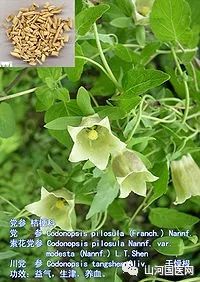
 Codonopsis (Image 5)Codonopsis contains polysaccharides, phenolic compounds, sterols, volatile oils, vitamins B1 and B2, various essential amino acids, glycosides, saponins, and trace alkaloids, as well as trace elements. It has a stimulating effect on the nervous system, enhances the body’s resistance; regulates gastrointestinal motility, has anti-ulcer effects, inhibits gastric acid secretion, and reduces gastric protease activity; it can increase red blood cells and hemoglobin in rabbits, and has a role in increasing white blood cell counts during chemotherapy and radiotherapy; it can dilate peripheral blood vessels and lower blood pressure, and can inhibit the pressurizing effect of adrenaline.
Codonopsis (Image 5)Codonopsis contains polysaccharides, phenolic compounds, sterols, volatile oils, vitamins B1 and B2, various essential amino acids, glycosides, saponins, and trace alkaloids, as well as trace elements. It has a stimulating effect on the nervous system, enhances the body’s resistance; regulates gastrointestinal motility, has anti-ulcer effects, inhibits gastric acid secretion, and reduces gastric protease activity; it can increase red blood cells and hemoglobin in rabbits, and has a role in increasing white blood cell counts during chemotherapy and radiotherapy; it can dilate peripheral blood vessels and lower blood pressure, and can inhibit the pressurizing effect of adrenaline.
Suitable Population
Those with weak constitutions, insufficient Qi and blood, sallow complexion, and those who are weak after illness or childbirth should consume it; those with Spleen and Stomach Qi deficiency, fatigue, weakness in the limbs, poor appetite, loose stools, chronic diarrhea, insufficient Lung Qi, cough, shortness of breath, and those who are weak and prone to colds; those with Qi deficiency and blood deficiency should consume it; those with chronic nephritis and proteinuria should consume it; those with chronic anemia, sallow disease, leukemia, thrombocytopenic purpura, and rickets should consume it. For the above-mentioned diseases, traditional formulas that use ginseng are often replaced with this product.
Dosage
Daily dosage is 10-30 g. It can be decocted, made into paste, or added to porridge, rice, or dishes.
Selected Medicinal Dishes
1. Codonopsis and Poria Porridge: 10 g each of Codonopsis, Poria, and fresh ginger, and 100 g of japonica rice. First, decoct the three ingredients to extract the juice, then add the rice to cook into porridge. Salt can be added for flavor. Originates from Sheng Ji Zong Lu. This formula uses Codonopsis and Poria to tonify the Spleen and benefit the Stomach, while fresh ginger warms the Middle, strengthens the Stomach, and stops vomiting, suitable for Spleen and Stomach weakness, poor appetite, and weight loss.2. Codonopsis and Jujube Rice: 10 g of Codonopsis, 10 jujubes, and 150 g of glutinous rice. First, wash the Codonopsis and jujubes, decoct to extract the juice, then steam the glutinous rice, invert it into a bowl, and pour the juice of Codonopsis and jujubes over it, adding an appropriate amount of white sugar. It can be consumed twice daily. Originates from Xing Yuan Lu. This formula uses Codonopsis to tonify the Spleen and benefit Qi, with jujubes and glutinous rice working together with Codonopsis, suitable for Spleen Qi deficiency.3. Codonopsis and Huang Qi Porridge: 10 g each of Codonopsis and Huang Qi, and 100 g of japonica rice. Decoct the Codonopsis and Huang Qi to extract the juice, then add the rice to cook into porridge. Sweeten with white sugar. This formula uses both Codonopsis and Huang Qi to tonify Spleen and Lung Qi, with Huang Qi also stabilizing the exterior and stopping sweating, suitable for Lung and Spleen Qi deficiency, fatigue, shortness of breath, spontaneous sweating, poor appetite, and loose stools.4. Liang Yi Paste: Equal parts of Codonopsis and Shu Di Huang. Add water to decoct to extract a concentrated juice, then add an equal amount of white sugar and continue to boil until thickened. Each time, take 1-2 spoonfuls, or dissolve in warm water for drinking. Originates from Jing Yue Quanshu. This formula uses Codonopsis to tonify Qi and Shu Di Huang to nourish blood, suitable for Qi and blood deficiency, fatigue, and dizziness.5. Codonopsis and Frog Juice: Main ingredients: 2 frogs, 3 g of Codonopsis. Ingredients: Salt and monosodium glutamate to taste. Method: 1. Clean and skin the frogs, cut into pieces, and place in a small stewing pot. 2. Add Codonopsis and about 1 bowl of boiling water, stew for about 1 hour. 3. Remove the medicinal residue before eating, and season with monosodium glutamate and salt. Characteristics: The soup is white, and the meat is tender. Medicinal value: Codonopsis is sweet and neutral, can strengthen the Spleen, benefit the Lungs, tonify Qi, and nourish blood, and when stewed with the sweet and neutral frog, it can treat chronic nephritis, weakness, poor appetite, blood deficiency, sallow complexion, insufficient Qi, fatigue, but should be avoided by pregnant women and not consumed on an empty stomach.6. Codonopsis, Goji Berries, and Pig Liver Porridge: Main ingredients: 20 g of Codonopsis, 30 g of goji berries, 50 g of pig liver, and 60 g of japonica rice. Method: Cook together into porridge, and consume 1-2 times daily. Medicinal value: Mainly treats senile cataracts with liver and kidney deficiency type: symptoms include blurred vision, dizziness, tinnitus, soreness and weakness of the waist and legs, pale tongue, thin coating, and weak pulse.7. Codonopsis, Goji Berries, and Chicken Soup: Main ingredients: 30 g of Codonopsis, 30 g of goji berries, 20 g of longan flesh, and 150 g of chicken. Method: Cook together in a clay pot, and add a small amount of wine and salt for seasoning before serving. Consume 1-2 times daily. Medicinal value: Mainly treats periodontal disease with Qi and blood deficiency type: symptoms include pale and receding gums, exposed tooth roots, loose teeth, frequent dreams, pale tongue, thin white coating, and weak pulse.8. Codonopsis and North Apricot Stewed Pig Lung: Main ingredients: 200 g of pig lung, 20 g of Codonopsis, and 10 g of North apricot kernels. Method: Stew together, season, and drink the soup. Medicinal value: Mainly treats chronic bronchitis with Lung and Spleen Qi deficiency type: symptoms include cough with white and thin phlegm, spontaneous sweating, shortness of breath, poor appetite, fatigue, low voice, and worsening cough or wheezing with wind-cold exposure, pale tongue, white coating, and weak pulse.
Codonopsis Preparations
Chinese Name: Codonopsis GlycosideEnglish Name: LobetyolinContent: HPLC ≥ 98%Specification: 20 mg/vialMolecular Formula: C20H28O8Molecular Weight: 396.432Characteristics: White powder.Uses: For content identification.Source: The dried root of the perennial herbaceous plant Codonopsis pilosula (Franch.) Nannf., Codonopsis modesta Nannf. var. modesta (Nannf.) L. T. Shen, or Codonopsis tangshen Oliv.Pharmacological Effects: It has a good protective effect against gastric mucosal damage caused by ethanol, acid, and alkali, and has significant anti-ulcer effects.
Legends and Stories
Story One
In ancient times, there was a wealthy man named Gao in the mountains, who ran a traditional Chinese medicine shop called “Jishi Tang,” selling fake and inferior medicines, harming the local people. There was a poor family with a young man named Zhang Lang, who relied on his father for support; his mother died after taking the fake medicine from “Jishi Tang,” leaving them with a debt. Later, Zhang Lang’s father fell seriously ill, and they had no choice but to borrow some medicine from “Jishi Tang,” but his condition worsened. It turned out that the “Codonopsis” prescribed by the doctor was replaced with other roots when preparing the medicine. Zhang Lang realized that the medicine sold was unreliable, so he went up the mountain to find Codonopsis.Zhang Lang carried a basket and a hoe, searching in the mountains, where there were steep cliffs, cold winds, and dark fog, which was quite frightening. Exhausted and hungry, he finally collapsed in a cave. In a daze, he felt as if he was sleeping on a bed of petals, soft and comfortable, and in front of him stood a young girl, beautiful and slender, very charming. The girl asked him what he was doing there. After he told her his troubles, the girl said, “There is a big Codonopsis in the valley ahead; dig it up and plant it in your garden, then pick a leaf and make a decoction for your father to drink, and he will recover.” Zhang Lang woke up, realizing it was a dream. By this time, it was already dawn. He climbed over the cliff and came to the valley, where he indeed found a Codonopsis. Zhang Lang carefully dug it up, and to his surprise, it was a foot long and had taken on a human shape, with arms and legs, a nose and eyes, resembling the girl from his dream. He carefully placed the Codonopsis in his basket, straightened its vines, and slowly brought it home. He planted the Codonopsis in his vegetable garden, built a trellis, and then picked a leaf to make a decoction for his father, who unexpectedly recovered immediately.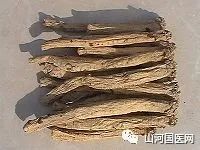
 Traditional Chinese Medicine CodonopsisFrom then on, Zhang Lang watered the Codonopsis every day, often cultivating the soil and weeding, treating it as more precious than anything else. Eventually, one day, the girl from his dream appeared under the Codonopsis trellis, and Zhang Lang married her, living a happy life.
Traditional Chinese Medicine CodonopsisFrom then on, Zhang Lang watered the Codonopsis every day, often cultivating the soil and weeding, treating it as more precious than anything else. Eventually, one day, the girl from his dream appeared under the Codonopsis trellis, and Zhang Lang married her, living a happy life.
Story Two
It is said that the two immortals, Lü Dongbin and Tie Guai Li, traveled from the Central Plains to the Taihang Mountains, marveling at the surrounding scenery, which resembled a fairyland. When they reached the Ping Shun area, they suddenly saw a wild boar digging in the soil on the hillside. The two immortals, with childlike curiosity, wanted to see what was going on. They noticed that the place where the wild boar had dug was loose and shiny, and a plant resembling a bean vine was growing there. Tie Guai Li put it in his mouth, chewing while following Lü Dongbin. After a while, Lü Dongbin was panting and turned to look at Tie Guai Li, who was still calm and closely following. Along the way, he met a woodcutter, who said, “This is a divine herb. It is said that in ancient times, in Shang Dang County, a family would often hear human voices at night, but every time they went out to check, they never saw anyone. One night, the owner searched for the sound and finally found a peculiar plant that resembled a human shape, which was named Codonopsis because it was found in Shang Dang County.”Disclaimer:The content on this site is added and organized by users, for learning and reference purposes only. The information on the site may not be accurate, comprehensive, or up-to-date, and the content should not be the final basis for diagnosing or treating diseases.Shanhe Traditional Chinese Medicine Networkreminds users that if you have any physical discomfort, please seek medical attention promptly. Thank you for your support and love; we will strive to do better~!!!


